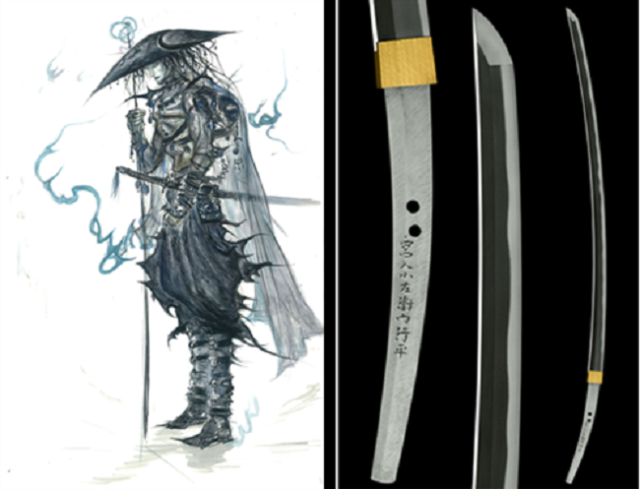When video game developer Square Enix gave the largest preview to date of its upcoming role-playing game Final Fantasy XV, it rubbed some fans the wrong way. Just about every installment since the series switched to having set characters has featured female adventurers, but the company announced that the playable cast of Final Fantasy XV is entirely male.
While details are still scarce about the separate but concurrently in-development game Mevius Final Fantasy, newly released screenshots of the smartphone title also feature only a male character. With a Y-chromosome suddenly seeming like a necessary bit of adventuring equipment, does this mean Final Fantasy has consciously decided to turn its back on the many female fans who’ve helped it achieve the success it enjoys today?
Probably not, since while it’s not certain whether or not Mevius Final Fantasy will allow female gamers to create a character in their own likenesses, it’s absolutely certain that the game is planning to provide a generous serving of extra-lean beefcake.

















 Starbucks teams up with 166-year-old Kyoto doll maker for Year of the Horse decorations【Photos】
Starbucks teams up with 166-year-old Kyoto doll maker for Year of the Horse decorations【Photos】 What’s inside the McDonald’s Japan fukubukuro lucky bag for 2026?
What’s inside the McDonald’s Japan fukubukuro lucky bag for 2026? Site of Japan’s most famous samurai murder is now a Kyoto karaoke joint
Site of Japan’s most famous samurai murder is now a Kyoto karaoke joint Dragon Quest Slime toys appear at McDonald’s Japan in crossover with Grimace and pals【Video】
Dragon Quest Slime toys appear at McDonald’s Japan in crossover with Grimace and pals【Video】 Spongebob reimagined as an anime opening is hilariously disturbing in all the right ways 【Video】
Spongebob reimagined as an anime opening is hilariously disturbing in all the right ways 【Video】 Super-expensive capsule toys – Trying out Japan’s Premium Gachapon machine【Photos】
Super-expensive capsule toys – Trying out Japan’s Premium Gachapon machine【Photos】 New Evangelion short anime, written by Hideaki Anno, to have world premiere early next year
New Evangelion short anime, written by Hideaki Anno, to have world premiere early next year Tokyo’s Tsukiji sushi neighborhood asks tour groups to stay away for the rest of the month
Tokyo’s Tsukiji sushi neighborhood asks tour groups to stay away for the rest of the month Tokyo adding new anti-littering fines in Shibuya and Harajuku, will require more trash cans too
Tokyo adding new anti-littering fines in Shibuya and Harajuku, will require more trash cans too Princesses, fruits, and blacksmiths: Study reveals the 30 most unusual family names in Japan
Princesses, fruits, and blacksmiths: Study reveals the 30 most unusual family names in Japan More Shinkansen trains being added to Japan’s “golden route” to meet traveler demand
More Shinkansen trains being added to Japan’s “golden route” to meet traveler demand Japanese avoiding domestic travel as foreign tourists increase, possibly creating vicious cycle
Japanese avoiding domestic travel as foreign tourists increase, possibly creating vicious cycle Street Fighter Hadouken Churros to be launched and eaten in Tokyo, Okami pudding on offer too
Street Fighter Hadouken Churros to be launched and eaten in Tokyo, Okami pudding on offer too Japanese man who didn’t know how banks work defrauded out of 21 million yen
Japanese man who didn’t know how banks work defrauded out of 21 million yen Japanese woman mistaken for bear
Japanese woman mistaken for bear This hot springs town in Japan sets fire across a mountain every winter in a beautiful tradition
This hot springs town in Japan sets fire across a mountain every winter in a beautiful tradition Tokyo considering law requiring more trash cans following litter increase in heavily touristed area
Tokyo considering law requiring more trash cans following litter increase in heavily touristed area Gundam and Reebok team up for new GQuuuuuuX Pumps【Photos】
Gundam and Reebok team up for new GQuuuuuuX Pumps【Photos】 Return of Totoro sequel short anime announced for Ghibli Park
Return of Totoro sequel short anime announced for Ghibli Park Japan’s human washing machines will go on sale to general public, demos to be held in Tokyo
Japan’s human washing machines will go on sale to general public, demos to be held in Tokyo Starbucks Japan unveils new Christmas goods and a rhinestone tumbler that costs 19,500 yen
Starbucks Japan unveils new Christmas goods and a rhinestone tumbler that costs 19,500 yen Real-world Nausicaa Ghibli anime glider completes its final flight in Japan【Video】
Real-world Nausicaa Ghibli anime glider completes its final flight in Japan【Video】 Japanese train company is letting fans buy its actual ticket gates for their homes
Japanese train company is letting fans buy its actual ticket gates for their homes Is China’s don’t-go-to-Japan warning affecting tourist crowds in Tokyo’s Asakusa neighborhood?
Is China’s don’t-go-to-Japan warning affecting tourist crowds in Tokyo’s Asakusa neighborhood? The 10 best day trips from downtown Tokyo【Survey】
The 10 best day trips from downtown Tokyo【Survey】 Nintendo’s Kirby now delivering orders at Kura Sushi restaurants, but not in Japan
Nintendo’s Kirby now delivering orders at Kura Sushi restaurants, but not in Japan Tokyo event lets you travel back in time, for free, to celebrate 100 years since Showa era start
Tokyo event lets you travel back in time, for free, to celebrate 100 years since Showa era start A guide to visiting Sagamiko Illumination, one of the three biggest light-ups in Kanto
A guide to visiting Sagamiko Illumination, one of the three biggest light-ups in Kanto Survey asks foreign tourists what bothered them in Japan, more than half gave same answer
Survey asks foreign tourists what bothered them in Japan, more than half gave same answer Japan’s deadliest food claims more victims, but why do people keep eating it for New Year’s?
Japan’s deadliest food claims more victims, but why do people keep eating it for New Year’s? We deeply regret going into this tunnel on our walk in the mountains of Japan
We deeply regret going into this tunnel on our walk in the mountains of Japan Studio Ghibli releases Kodama forest spirits from Princess Mononoke to light up your home
Studio Ghibli releases Kodama forest spirits from Princess Mononoke to light up your home Major Japanese hotel chain says reservations via overseas booking sites may not be valid
Major Japanese hotel chain says reservations via overseas booking sites may not be valid Put sesame oil in your coffee? Japanese maker says it’s the best way to start your day【Taste test】
Put sesame oil in your coffee? Japanese maker says it’s the best way to start your day【Taste test】 The top 10 annoying foreign tourist behaviors on trains, as chosen by Japanese people【Survey】
The top 10 annoying foreign tourist behaviors on trains, as chosen by Japanese people【Survey】 No more using real katana for tourism activities, Japan’s National Police Agency says
No more using real katana for tourism activities, Japan’s National Police Agency says Starbucks Japan reveals new sakura drinkware collection, inspired by evening cherry blossoms
Starbucks Japan reveals new sakura drinkware collection, inspired by evening cherry blossoms Super-expensive capsule toys – Trying out Japan’s Premium Gachapon machine【Photos】
Super-expensive capsule toys – Trying out Japan’s Premium Gachapon machine【Photos】 New Evangelion short anime, written by Hideaki Anno, to have world premiere early next year
New Evangelion short anime, written by Hideaki Anno, to have world premiere early next year Tokyo’s Tsukiji sushi neighborhood asks tour groups to stay away for the rest of the month
Tokyo’s Tsukiji sushi neighborhood asks tour groups to stay away for the rest of the month Tokyo adding new anti-littering fines in Shibuya and Harajuku, will require more trash cans too
Tokyo adding new anti-littering fines in Shibuya and Harajuku, will require more trash cans too Princesses, fruits, and blacksmiths: Study reveals the 30 most unusual family names in Japan
Princesses, fruits, and blacksmiths: Study reveals the 30 most unusual family names in Japan Coming of Age Ceremonies in Tokyo changing form due to COVID-19 State of Emergency
Coming of Age Ceremonies in Tokyo changing form due to COVID-19 State of Emergency Has China’s don’t-go-to-Japan warning shortened queues at this Ichiran ramen restaurant in Tokyo?
Has China’s don’t-go-to-Japan warning shortened queues at this Ichiran ramen restaurant in Tokyo? TikTok releases its Year in Music 2025 – Japan’s Top 10 Songs ranking
TikTok releases its Year in Music 2025 – Japan’s Top 10 Songs ranking Secret staff cafeteria in Tokyo is a hidden gem you won’t find in travel guides
Secret staff cafeteria in Tokyo is a hidden gem you won’t find in travel guides Kyoto’s Tofukuji temple opens secret area above Sanmon Gate to the public
Kyoto’s Tofukuji temple opens secret area above Sanmon Gate to the public Pocky recall issued in Japan after customers notice off-the-mark taste caused by unintended smells
Pocky recall issued in Japan after customers notice off-the-mark taste caused by unintended smells More Shinkansen trains being added to Japan’s “golden route” to meet traveler demand
More Shinkansen trains being added to Japan’s “golden route” to meet traveler demand Tokyo’s Vampire Cafe serving up blood-sauce burgers and sweets with fire and dark magic spells
Tokyo’s Vampire Cafe serving up blood-sauce burgers and sweets with fire and dark magic spells